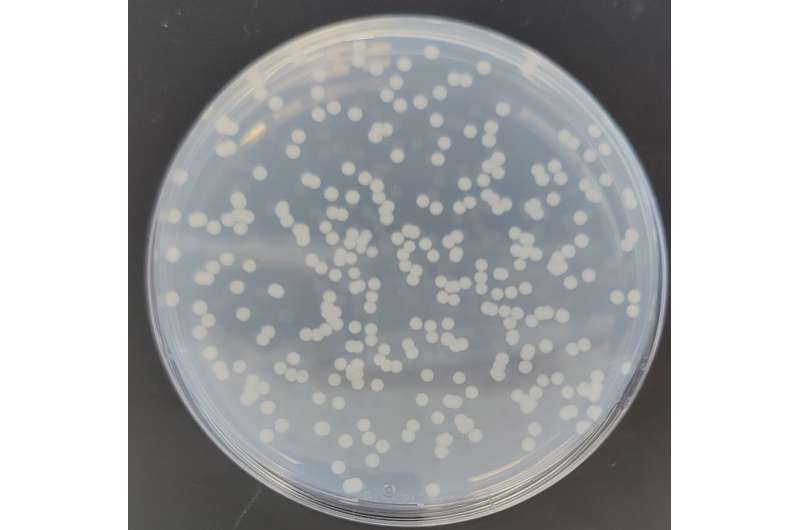August 24, 2023 report
This article has been reviewed according to Science X's editorial process and policies. Editors have highlighted the following attributes while ensuring the content's credibility:
fact-checked
peer-reviewed publication
trusted source
proofread
Researchers identify a type of bacteria that eats low volumes of methane

A team of chemical engineers at the University of Washington, working with a pair of colleagues from the U.S. Naval Academy, has identified a type of bacteria that eats low concentrations of methane. The study is reported in Proceedings of the National Academy of Sciences,.
Prior research has shown that there are many types of bacteria that eat methane, producing carbon dioxide as a byproduct, but until now, they have been found to do so only when there is an excess of methane around them. This limits their use as a methane sink.
In this new study, the researchers found a type of bacteria—Methylotuvimicrobium buryatense 5GB1C—that not only consumes methane at low volume levels, but thrives to the extent that it can increase its own numbers. It was also found to consume methane at faster rates than other bacteria.
As climate change progresses, scientists seek ways to remove greenhouse gases. And while most of the attention has been on carbon dioxide, methane is also a problem. Though the amount of methane emitted into the atmosphere is much lower than CO2, it is still considered to be a big problem because it warms the planet at a rate 85 times higher. Methane has in recent years also come to be a bigger problem because it is released during fracking.
Current bacterial types are typically effective at removing levels of methane only when its concentration is 5,000 parts per million. Testing of M. buryatense shows it is effective at removing methane at concentrations as low as 500 parts per million—and it does so at higher rates.
Testing also showed that the strain does not produce nitrous oxide when it eats methane, a big plus. Preliminary results have shown that deployment of M. buryatense reactors can be scaled relatively easily. The only hindrance, the research team suggests, is the willingness of those with the means to construct enough reactors to make a difference.
More information: Lian He et al, A methanotrophic bacterium to enable methane removal for climate mitigation, Proceedings of the National Academy of Sciences (2023). DOI: 10.1073/pnas.2310046120
Journal information: Proceedings of the National Academy of Sciences
© 2023 Science X Network





















